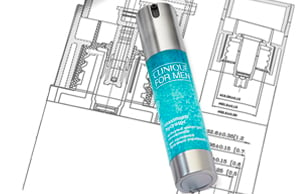Aluminum is the 3rd most prevalent (8%) element in the earth’s crust. It is used in the packaging industry for many different applications. This material provides a complete barrier to light, oxygen, moisture, and bacteria
Why Aluminum for Packaging?
Aluminum’s excellent barrier properties make it an ideal solution when there is concerns with either the bulk being attacked by aggressive environments, or aggressive bulks attacking the packaging. Either scenario can drastically reduce a product’s shelf life, however, incorporating aluminum over shells to caps, jars, and / or bottles, utilizing aluminum heat induction seals, or even hot stamping foil can potentially be the solution. Along with its great barrier properties, aluminum is also a great insulator, making it ideal packaging for just about any application.
Here are some other attractive benefits of using aluminum for packaging:
- It has excellent durability and strength.
- Weight is reduced significantly, which saves energy in transport.
- Aluminum packaging is compatible with printing processes, having great decorative potential.
- Aluminum foil can be laminated to deliver rigid packaging systems, withstanding harsh dealing with in the distribution chain.
Aluminum is 100% Recyclable
Along with it, holding high standards with regards to aesthetics, aluminum packaging appeals to the eco-friendly consumers due to its recyclability. It can be reused indefinitely without a significant reduction in quality, making it 100% recyclable.
In the present time, post-consumer aluminum products' recycling preserves more than 90 million tons of carbon dioxide and 100,000 GWh of electrical energy.
Aluminum metal isn't consumed during the lifetime of its product, yet it is utilized with the possibility to be reused with no loss of its inalienable qualities. Consequently, an aluminum product's lifecycle does not follow the conventional "cradle-to-grave" sequence, but it follows a sustainable "cradle-to-cradle" sequence.
This property has prompted a condition where about 75% of the very nearly one billion tons of aluminum is still in beneficial use.
By using just 5% of the primary energy input, aluminum will be available once as well as consistently for people in the future.








